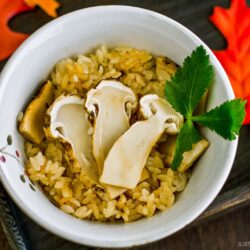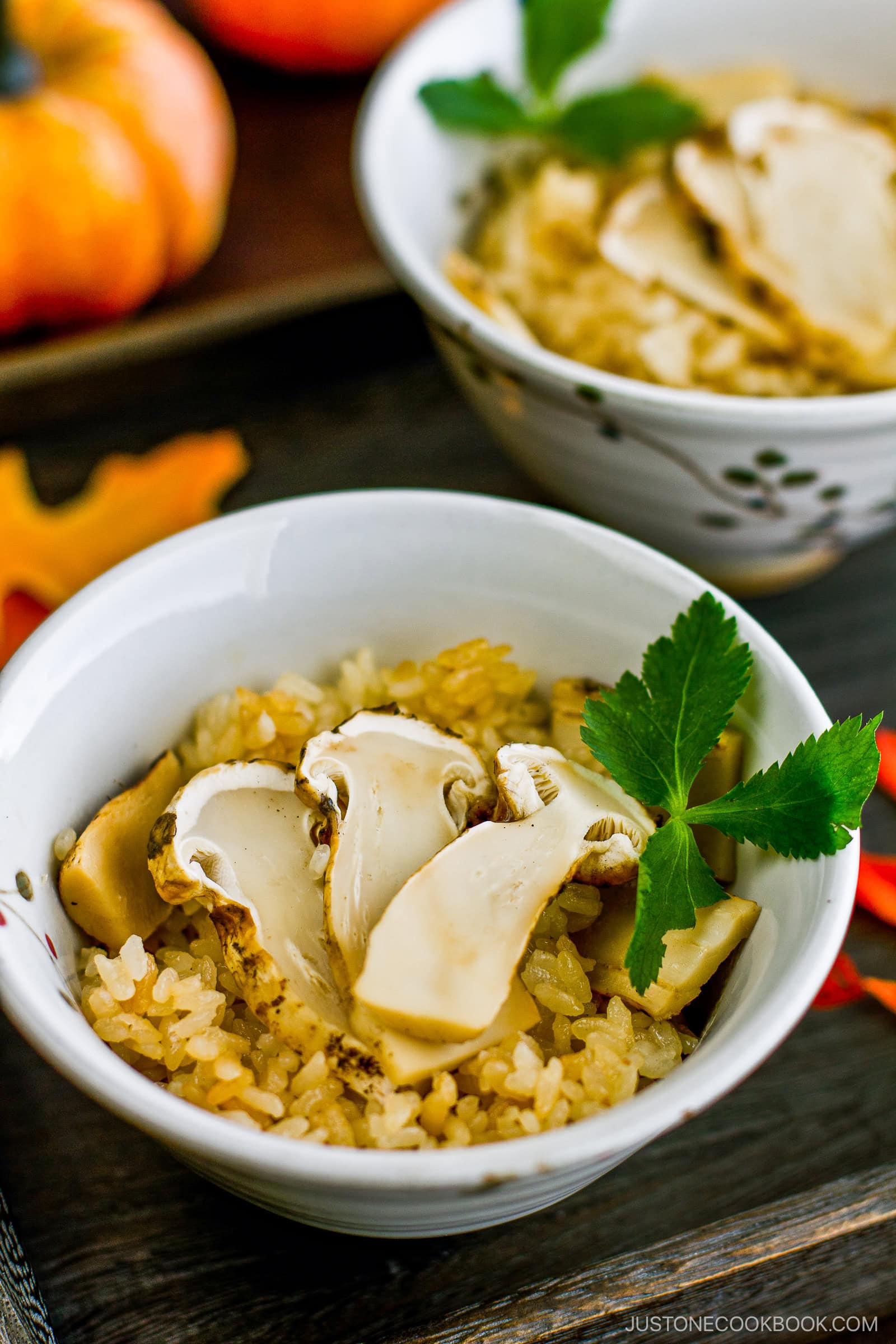
The most popular and well-known matsutake mushroom recipe in Japan is probably matsutake gohan (松茸ご飯), or seasoned mixed rice with wild pine mushrooms. Matsutake have a flavor and essence often compared to French truffles.
During my research, I became curious about the differences between truffles and mushrooms. It turns out that truffles and mushrooms are both fungi, but mushrooms grow above ground and truffles grow underground. Isn’t it interesting?
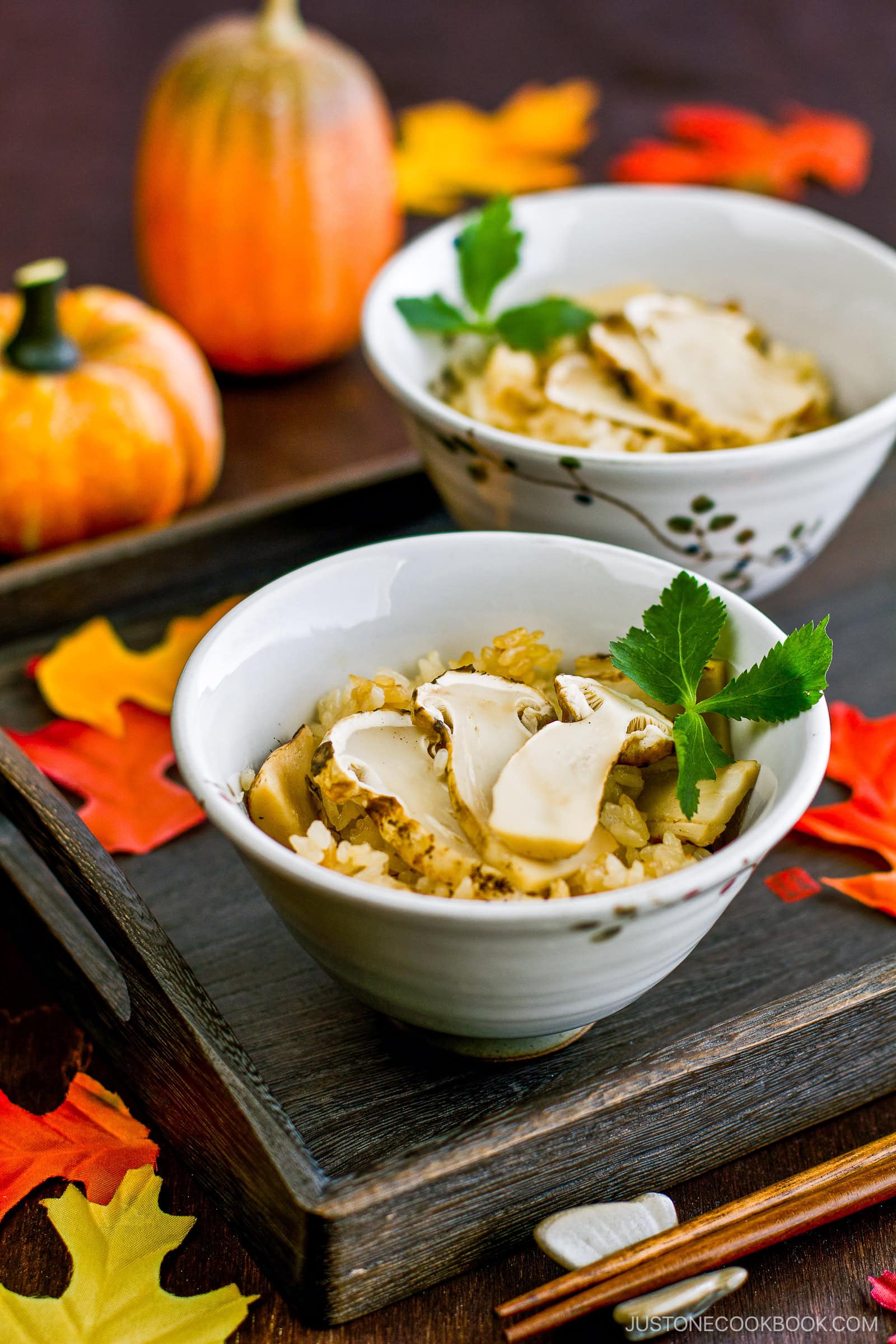
What are Matsutake?
Matsutake (matsu = pine + take = mushrooms) is a Japanese delicacy highly prized for its distinct aromatic scent and depth of flavor. Wild Japanese matsutake mushrooms are hard to find in Japan, and the prices reflect this. The high-quality ones can cost up to $1,000 per pound and the exotic ones run $2,000.
In North America, wild matsutake are found in the Pacific Northwest of the US. Luckily, we can find US-grown matsutake in the local Japanese supermarket for about $40 per pound. Living up to its reputation, the aroma and flavor this mushroom offers is simply amazing.
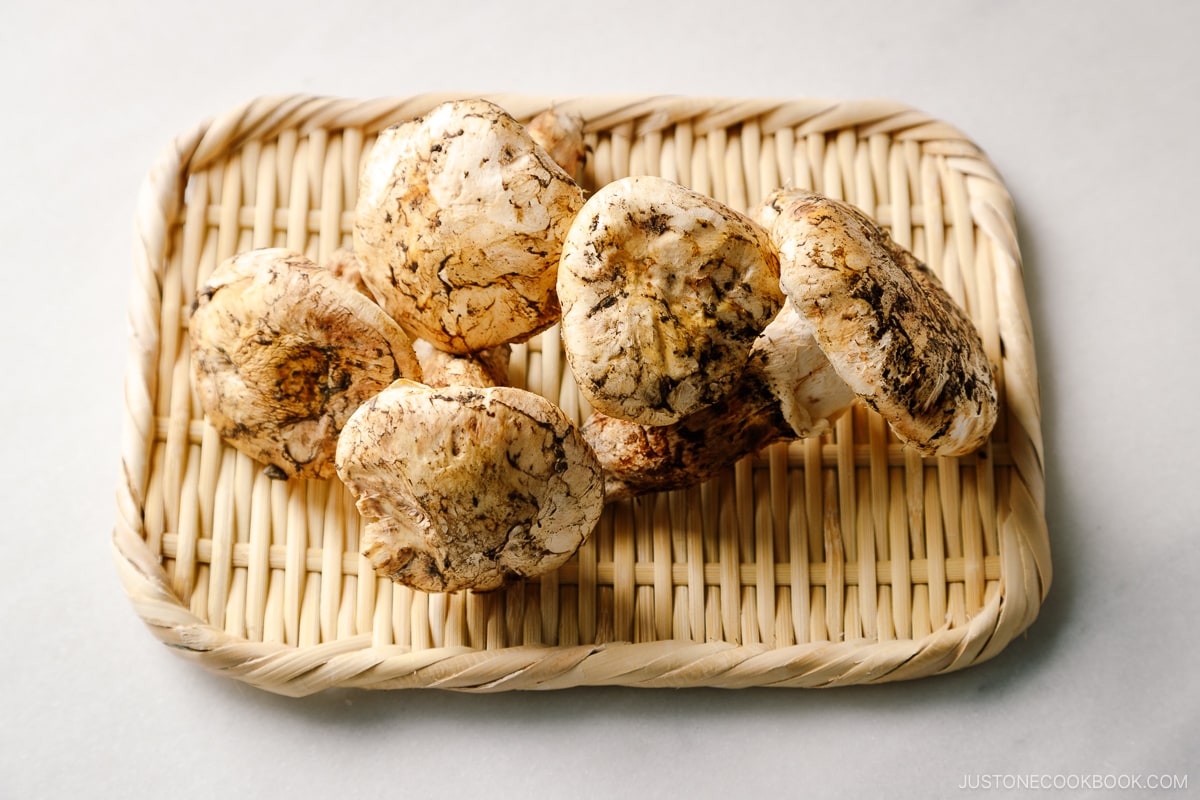
Ingredients for Matsutake Gohan
Pine mushroom rice is a type of takikomi gohan (seasoned mixed rice) made with common Japanese condiments:
- matsutake
- Japanese short-grain rice
- dashi (Japanese soup stock) — you can use Awase Dashi made with bonito flakes and kombu, Vegan Dashi made with shiitake mushrooms, or a dashi packet or dashi powder
- soy sauce
- sake
- mirin
- mitsuba — for garnish
How to Make Matsutake Gohan
This delicious rice dish is actually quite simple to make in a rice cooker. If you don’t have one, you can use a pot over the stove, Instant Pot, or donabe.
- Wash and drain the rice in a sieve. For more detailed instructions on rinsing and washing Japanese short grain rice, see my post on How to Make Japanese Rice.
- Prepare the matsutake. Trim the ends and clean off the dirt with a damp paper towel or kitchen towel. When you clean matsutake, do not wash them so you preserve the flavor of the mushrooms. Slice lengthwise.
- Layer the ingredients in the inner pot of a rice cooker. Add the well-drained rice, followed by the dashi broth and seasonings. Scatter the sliced matsutake on top; do not mix. Let the rice soak in the liquid for 15–30 minutes.
- Cook the rice. Mix gently and serve with chopped mitsuba for garnish.
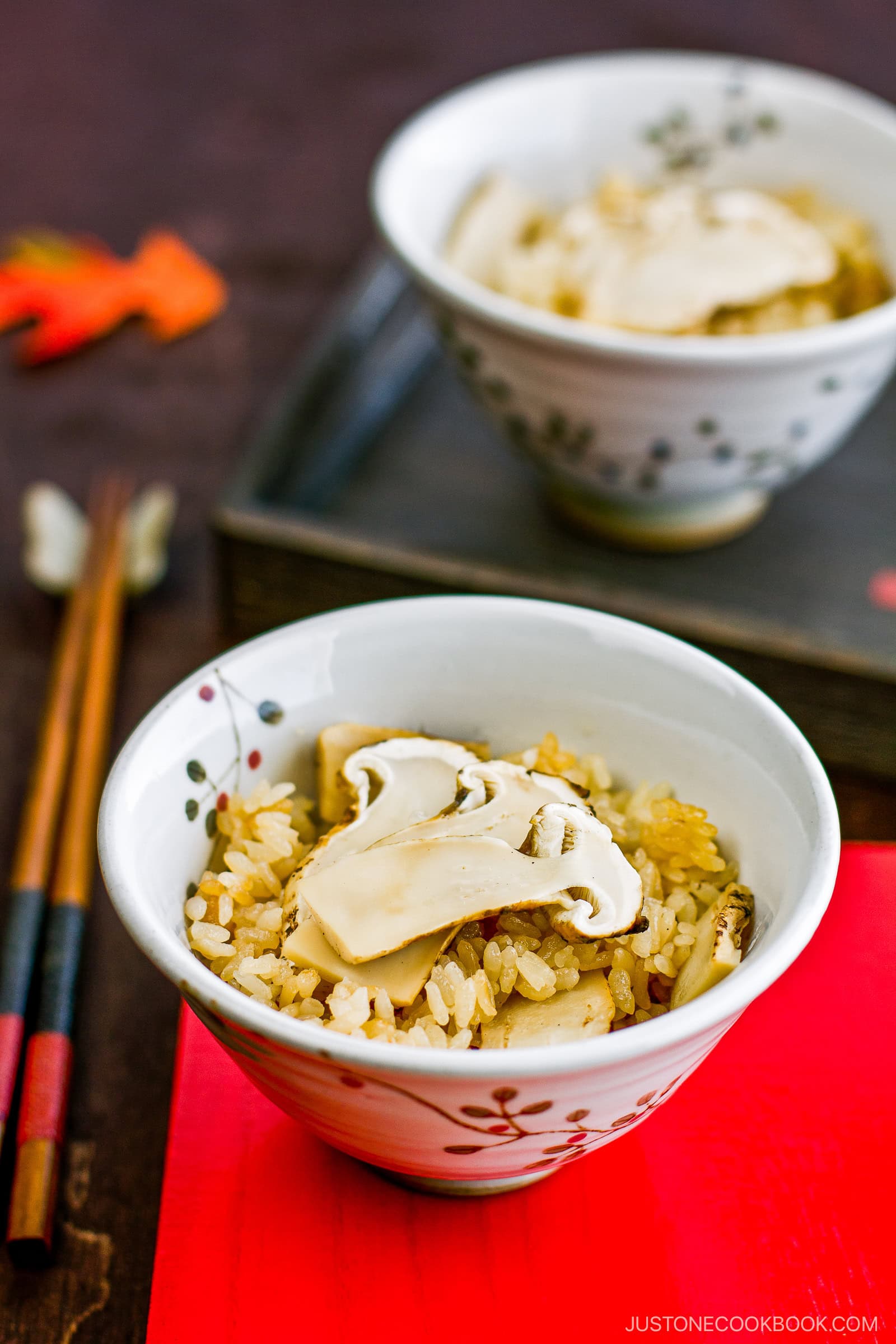
Wish to learn more about Japanese cooking? Sign up for our free newsletter to receive cooking tips & recipe updates! And stay in touch with me on Facebook, Pinterest, YouTube, and Instagram.
Matsutake Gohan (Wild Pine Mushroom Rice)
Ingredients
- 2¼ cups uncooked Japanese short-grain white rice (2¼ cups uncooked Japanese short-grain rice are 3 rice cooker cups (450 g, 15.9 oz) and yield 5¼ cups (990 g) of cooked rice, enough for 6 servings)
- 7 oz matsutake mushrooms
- 2½ cups dashi (Japanese soup stock) (use standard Awase Dashi, a dashi packet or dashi powder, or Vegan Dashi)
For Garnish
- 6 sprigs mitsuba (Japanese parsley)
Instructions
- Rinse 2¼ cups uncooked Japanese short-grain white rice under running water several times until the water is almost translucent and drain well. Trim off the bottom of the stems of 7 oz matsutake mushrooms. Thoroughly clean the mushroom with a damp towel or paper towel. Do not wash the mushroom. Slice lengthwise into ⅛-inch (3-mm) slices.
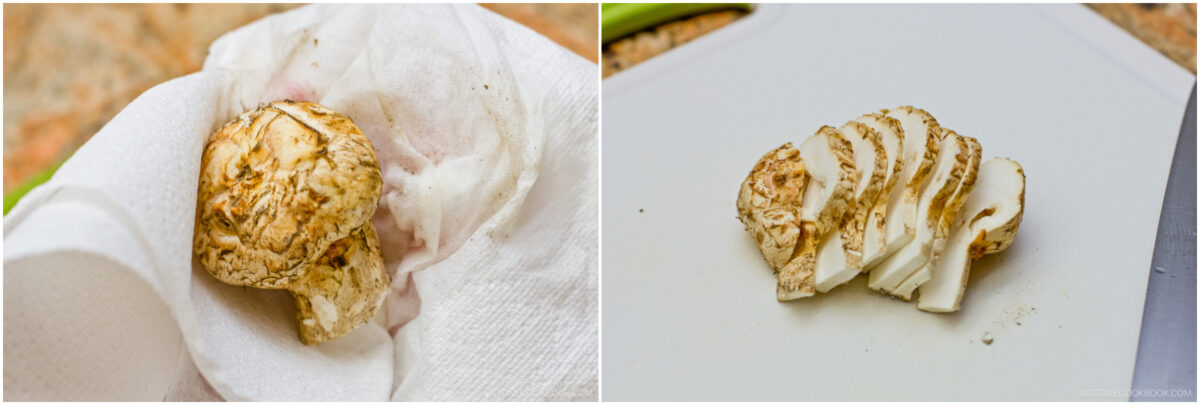
- In the inner pot of a rice cooker, put the well-drained rice, 3 Tbsp soy sauce, 2 Tbsp mirin, and 1 Tbsp sake. Add the dashi to the 3-cup water line of the inner pot; you don‘t need to use all 2½ cups dashi (Japanese soup stock). Add the matsutake mushroom on top of the rice (do not mix!) and start cooking. Rice cookers these days include 10 minutes of soaking time; however, I recommend soaking the rice for 15–30 minutes before cooking. Tip: Rice cooks evenly when it‘s not mixed with other ingredients. If you don‘t have a rice cooker, you can cook rice with a pot over the stove, Instant Pot, or donabe.
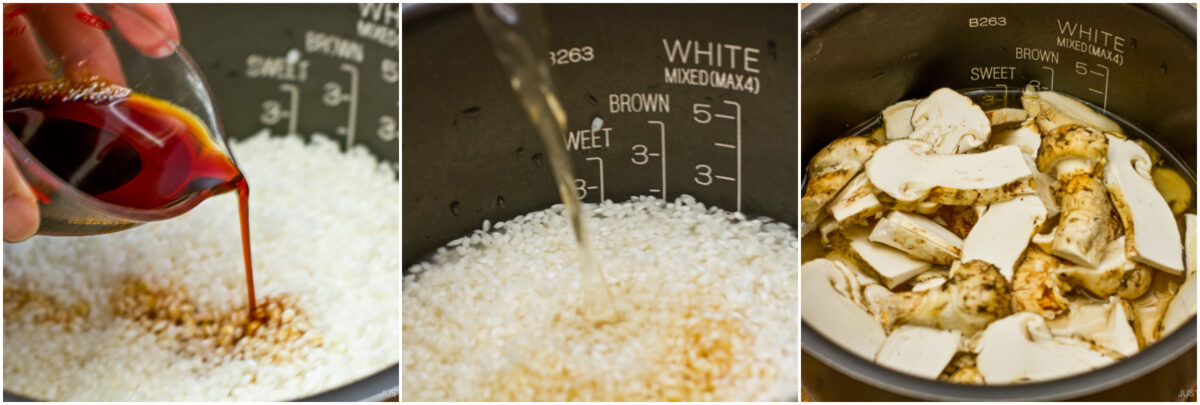
To Serve
- When the rice is cooked, mix it gently. Garnish with 6 sprigs mitsuba (Japanese parsley) on top and serve.
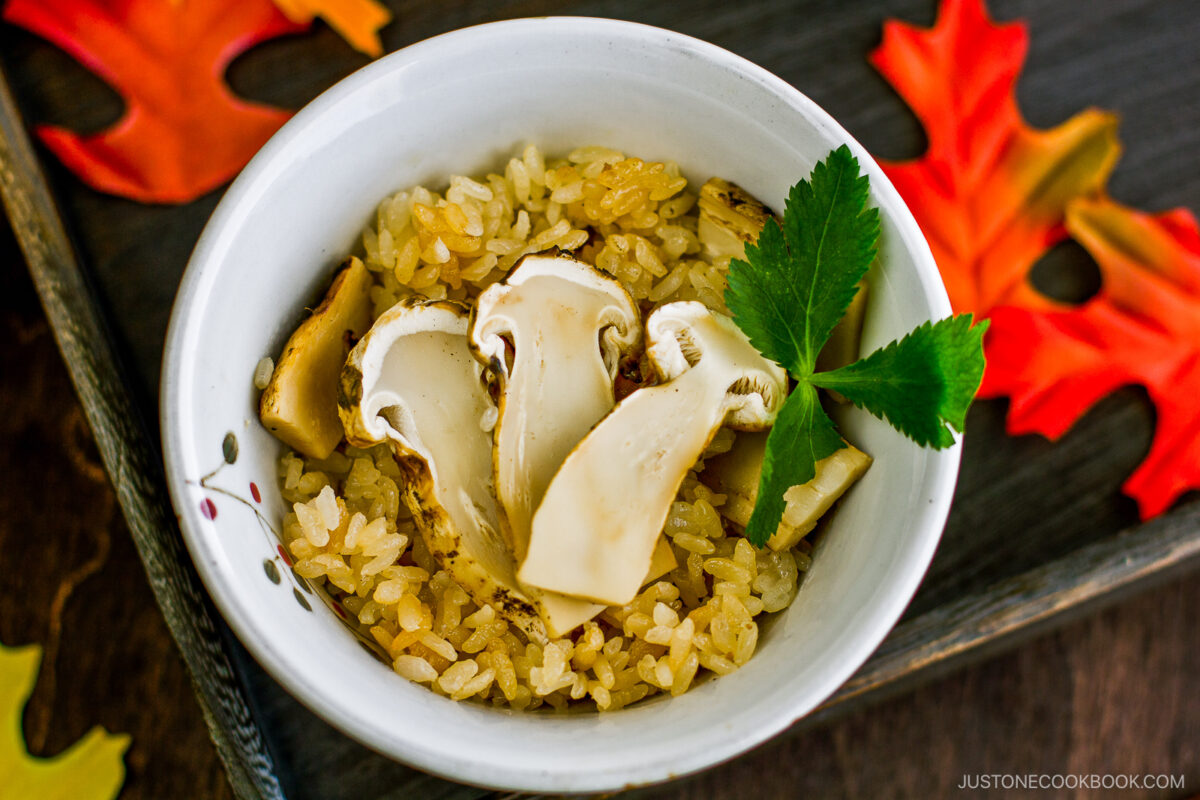
To Store
- You can keep the leftovers in an airtight container and store in the freezer for a month. I recommend freezing the rice over refrigerating as the rice gets dry and hard in the fridge. Read more about How to Store Cooked Rice.
Nutrition
Did you make this recipe?
Tag @justonecookbook on Instagram so we can see your delicious creation!


